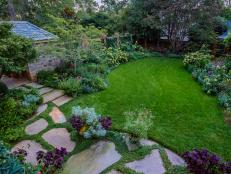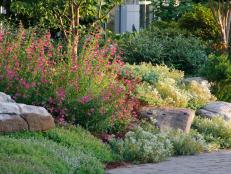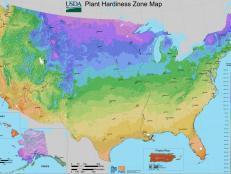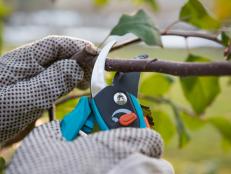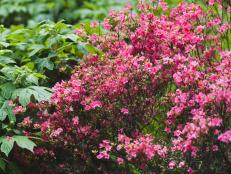Landscaping Goofs
The best garden I've ever had was in my mind's eye — before changing whims, funky soil and various predators have had their say. Still, I'm successfully putting my brand on what had once been an open expanse of lawn. My neighbor was aghast when he saw me plowing large swaths through the front, side and backyards, so I confessed that prim borders aren't my thing. But now when I pull into the driveway after work, the frothy seed heads of various ornamental grasses — positioned where the late afternoon sun backlights them — fill me with joy.
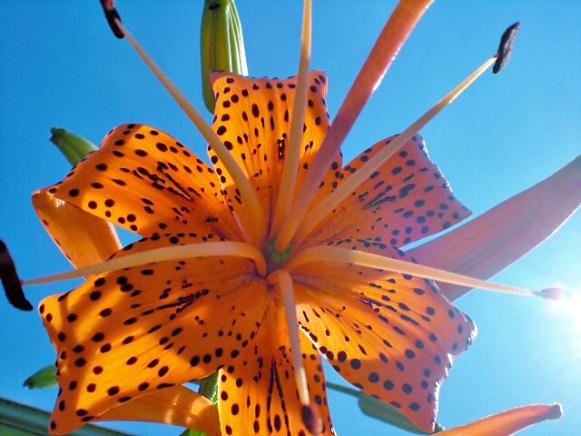
The late great garden writer Henry Mitchell paid a reasonable amount of attention to texture, form and color in his own garden, but he cared more for the "progress of plants" than being a stickler for design. "If I want a few tiger lilies — as I certainly do — and the best site for them happens to be next to a crimson rose bush, then that's where they go."
Fortunately, gardening is an individualistic sport in which the main goal is to please yourself. And gardeners know that great gardens are a process, not a destination. We can all learn from each other's mistakes, though. Here are a few that come to mind:
Wrong plant in the wrong place.

The previous owner of our home loved dogwoods and planted them throughout the yard. The only problem: the yard is relentlessly hot and sunny all summer. The poor little dogwoods, meant to be understory trees, are struggling to survive. Know the conditions your prospective garden additions are going to want — light, soil, water — before you plant. And as the landscape changes — as it invariably does — note whether you need to move something to a more suitable location.
Subsoil on top.
Builders and developers sometimes carve off the top soil from a site, leaving only the subsoil. "This is No. 1 on my list of landscaping mistakes," says Henry Nunnery, York County Extension Agent in South Carolina. "It means that people then are trying to grow things where it's almost impossible [to do so], and it's sometimes hard to work around." Nunnery suggests that prospective home buyers, when possible, work out an agreement with the builder at the beginning to preserve the top soil or to restore at least six inches of top soil back to the site.
Out of proportion.
A nearby ranch home is all but obliterated from view by two gigantic white pines planted in front of the home. Years ago, these might have started out as cute Christmas trees. Seventy feet later (and 35 feet in width), they give only the slightest glimpse of the home hiding behind their needles. Accommodate the expected mature size of a plant when you plant it. That applies to girth as well: If you're planting broad-beamed trees and shrubs such as dogwoods and large viburnums near the house or driveway, be sure to allow for their eventual expansion. Don't plant them in areas where they won't have room to grow, because many of these trees and shrubs are not meant to be confined to sizes smaller than nature intended.
Topping trees.

Many homeowners get sold on the erroneous notion that topping trees saves branch drop and maybe roof damage. The truth is, removing a tree's crown sets the tree up for rapid decay and decline. Plus, the suckers that sprout from the cut trunk are weakly attached and susceptible to breakage--not to mention creating disfigured silhouettes in the wintertime.
If you have to reduce the height of a tree--perhaps because of nearby power lines--consider removing it and planting a smaller tree. There are plenty of wonderful, shorter versions of many of our favorites. Want a maple? Amur maples and paperbark maples make fabulous—and more diminutive—lawn specimens that won't take over the landscape.
Too much busy-ness.
When you're an enthusiastic gardener, it's fun to have one of each thing, but try to congregate your experiments into one area. Or find a way to pull the look together by repeating some of the same colors and plants in other parts of the landscape.
Too much of the same thing.
If you want to camouflage a 200-foot length of a neighbor's chainlink fence, there may be a better way than planting Burford hollies every four feet. Besides being monotonous, too many of the same type of plant sets up a monoculture, which may then become susceptible to an invasion of pests. How much more fun to have a selection of viburnums, hollies, elaeagnus, leucothoe, and other flowering and fruiting shrubs that will provide multi-season interest and feed (or house) the birds.
Planting too deeply.
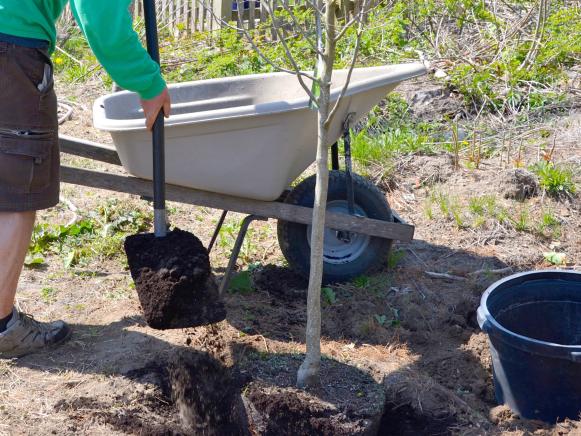
Fiskars
A tree needs to have a "basal flare," a widening of the trunk near the ground. If your tree looks more like a telephone pole, it's planted too deeply. Plant all trees and shrubs at the same level as they grew in the nursery. If you dig the planting hole deeper than the root ball (you don't need to), be sure to tamp the soil well as you backfill so that the tree doesn't settle below its ideal planting depth over time.
Grade changes around already established trees can also wreak havoc on a tree's health. Adding as little as six inches of soil — and sometimes even less — on top of what's already there can reduce air circulation, and restrict the movement of water and nutrients. Some species are more susceptible than others. If you must change the grade, call in a certified arborist to help guide the process.
Not taking care of the big issues first.
We can't anticipate every change of heart that will influence our garden plans, but we can try to take care of the biggies. If a retaining wall needs to be built or a new water line laid, best tackle those projects before you do any more planting.
And one of the biggest landscape mistakes, says Nunnery, is not taking care of drainage problems before you plant. "Our soils here are mostly clay, and if the water stands in place, plants get root rot and die — or just not grow. Drainage problems probably kill more plants than anything else." Recontouring your terrain, installing French drains, or simply ditching a problem site can help direct the water where you want it to go.







